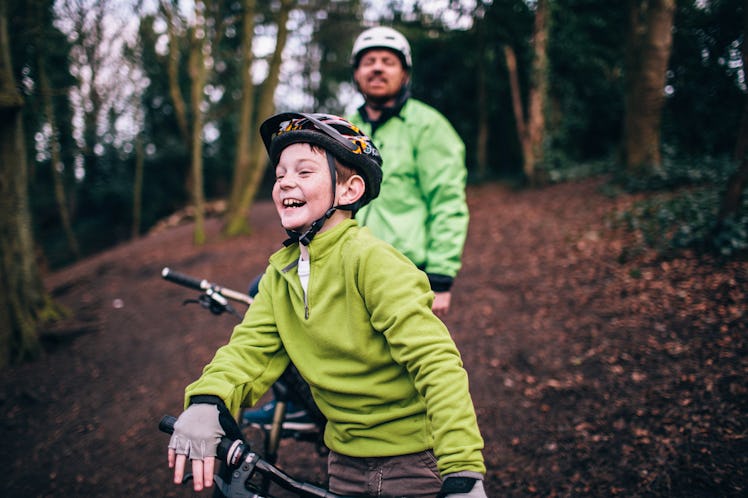How To Raise An Adventurous Kid (But Not A Risk-Seeking Lunatic)
You’ll have to get comfortable with letting your kid take risks.

Kids need adventure. It is, in fact, fundamental to their development. It’s not that babies and toddlers need to be taken hang gliding over the Himalayas, but they do need to have access to new experiences, as their brains are forming and growing and changing every minute. This poses a particular challenge for parents, who naturally tend to try to keep their kid safe and who step in at the first notice of potential danger or strife. But, if a parent wants a kid who tries new things and, in turn, has strong and healthy brain development, they need to pull back, says Ann Pleshette Murphy, author of The Secret of Play and former editor-in-chief of Parents Magazine.
“The process of developmentally growing up is all about the pruning that takes place in the brain, and that happens based on experience and reinforcement. So if in an extreme situation, a baby is institutionalized and not allowed to run around, they can never make up for those early years of being held back. It’s not just physical restrictions that you see later,” says Murphy.
In other words, if kids don’t run to the edge every once in a while, that sense of limitation will harm their brain development. So what’s a parent to do? Here are five things that parents who want to raise adventurous kids do.
Create A Safe Environment For Your Babies
Parents who want to help their babies explore their homes safely babyproof their house to the max. “The bottom line is that kids don’t need much,” says Murphy. “They’re naturally curious. That’s why we baby proof a house, because they don’t mean to stick a pin in the light socket, but they will, because it looks interesting.”
So instead of letting kids run straight to the knife drawer, parents should ensure that their home is safe, and that it’s an environment that a kid can safely explore, until they hit about age 2 or 3 — which is about the time kids understand that doing some things will hurt them, and they avoid those things.
Let Your Kids Explore
Parents who want kids who are confident and unafraid of adventure let their kids explore around the house or at the park. Murphy says that by the time kids are about 2 years old, they hear the word “no” every seven minutes. Instead of rushing in or limiting a kids exploration, parents should actively encourage their kids to explore the environment around them, assuming that environment is, of course, babyproofed. Although parents can keep a close eye, they should try not to say “no” as often as they do.
Hold Back When Your Kids Skin Their Knees
It’s hard not to rush to a kid when they’ve hurt themselves, but on the playground, a skinned knee is really no big deal. Kids will fall off the jungle gym, trip when running down a hill, and jump off swing sets, and sometimes, that will hurt. But parents need to hold back unless a kid is truly injured — kids are, at this point, testing their physical boundaries. If a kid falls, parents should wait to see how their kid reacts to the pain. “You’ll see this all the time: Children will fall down and look over to their parents too see whether they should be upset. And then, if mom is upset, the pain hits,” says Murphy.
Accept All Types of Adventurousness
Not every adventurous kid is going to climb to the top of the jungle gym. For older kids, especially those who are shy, simply meeting a new friend or going to a birthday party where they don’t know any people is a type of adventurousness that should be celebrated, says Murphy. After all, kids grow into adults, and adults don’t spend all of their days on jungle gyms. Giving them the tools to be confident and social with new acquaintances will serve them in the long term.
Introduce Your Kids To Things That Scare Them
Parents who want to raise kids who are adventurous should make sure that they safely introduce their kids to things that scare them. That means that if a kid is scared of, say, big animals, they don’t straight up take them on a safari. But they do take them to the pet store on an adoption day and make sure they at least walk by the cage of doggies waiting to be adopted. This builds resiliency — a key trait in adventurous kids — and it also helps them realize that their fears might not be so scary after all, Murphy says.
This article was originally published on